Кот и Верблюд и Еда

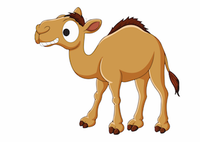
Однажды кот и верблюд говорили о еде. Они не согласны. Кот сказал, что кошачья еда самая лучшая. Верблюд сказал, что верблюжья еда самая лучшая.
Они решили попробовать. Они пошли в магазин. В магазине они нашли кошачью еду. Но они не нашли верблюжьей еды.
Верблюд плакал. "Где моя еда?" спросил он. Они пошли в другой магазин. Но они не могли найти верблюжью еду. Верблюд плакал. "Что я буду есть?" спросил он. Кот не знал.
"Что такое верблюжья еда?" спросил кот. "Я не знаю." плакал верблюд. "Если её нет в магазинах," сказал кот, "её нашли за городом?" И они смотрели за городом.
За городом, верблюд плакал. "не вижу верблюжьей еды." Кот согласился. "Здесь, на поле, не может быть еды." сказал он.
Внезапно верблюд засмеялся. "Здесь есть верблюжья еда," он сказал, "Я ем траву."
Лошадь и Ёжик и Дом
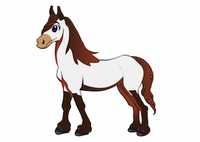
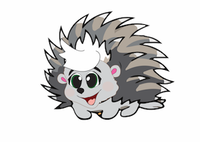
Однажды лошадь и ёжик говорили о домах.
Лошадь сказала что у него дом. Ёжик не верил. Лошадь сказала что это правда. Но ёжик все еще не верил. Лошадь сказала что он может показать это.
И они пошли в город. Там были дома в городе. Где был дом лошади? Это были дома людей. Ёжик спросил, где дом лошади? Лошадь показала ему.
Это была конюшня.
Волк и Лиса в Снегу
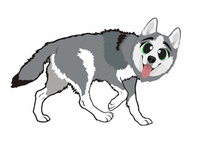
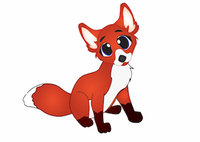
Однажды волк и лиса были в лесу и говорили о снеге.
Волк сказал что снег холодный. Лиса сказала что снег не холодный.
Волк хотел показать лисе. Там был снег за лесом. Волк побежал в снег. Но волк был прав. Снег холодный. И сейчас волк был холодный. Лиса смеялась.
Волк и Лиса в Лесу


Однажды волк и лиса говорили о скорости.
Они хотели знать кто быстрее. Волк сказал что он быстрее. И лиса сказала что она быстрее. Они соглашались бежать гонку.
Но где? Волк сказал что он знает место в лесу. Они соглашались бежать в лесу. И они пошли в лес.
Гонка началась. волк был быстрее. Но в лесу деревья. Волк забыл. И волк бежал в дерево.
Так лиса побеждала.
Consonant Shifts from Proto-Indo-European
This
is a very
summarised table of consonants shifts from Proto-Indo-European
to Russian
(representing eastern languages) and western languages
(represented by Latin
and two Germanic languages). Where it is all too apparent I
added notes
regarding alternative shifts. The table also completely
ignores vowels and
other features that affect sound changes and lists only the
most easily
recognised consonant shifts.
I use Latin letters
to represent consonants except
where not possible when I use old English or cyrillic letters.
|
Russian |
PIE |
Latin |
Germanic |
|
|
English |
Yiddish |
|||
|
P под |
*P *pods |
P pēs, pedis |
F foot |
F פֿיס |
|
T три |
*T *treyes |
T trēs |
þ three |
D דרײַ |
|
S сто |
*K *kmtom |
K centum |
H hundred |
H הונדערט |
|
B быть |
*B *buh |
F fui |
B to be |
B איך
בין |
|
D два |
*D *dwoh |
D duo |
T two |
Ц צוויי |
PIE
*<D> sometimes
transforms into <L> in Latin (мед <-> mel) at which
point the Germanic cognate
can have the expected <T> (lingua <-> tongue). PIE
*<D> can
also transform into Latin <B> if followed by <U>
or <W> (duo
<-> bis).
For the sweet drink "mead" the *<D>
apparently survived
into Germanic.
|
Russian |
PIE |
Latin |
Germanic |
|
|
English |
Yiddish |
|||
|
G груда |
*G *gher |
G grandis |
G great |
G גרויס |
At this point it
should be noted that a Germanic
<G> often turned into an English weak consonant creating
German-English
pairs garden <-> yard, sonnig <-> sunny, Zug
<-> tow, gelb
<-> yellow.
|
Russian |
PIE |
Latin |
Germanic |
|
|
English |
Yiddish |
|||
|
S сестра |
*S *swesor |
S soror |
S sister |
Ш שוועסטער |
Note that <S>
turned into <Ш> (written "sch" in German and "sh" in
English) in
German (and thus Yiddish) before a consonant. Compare English
strone with
German Stein where "S" is pronounced like "sh". Before
<K> an <S> turned into <Ш> and
the <K> is no longer pronounced: school <->
Schule.
|
Russian |
PIE |
Latin |
Germanic |
|
|
English |
Yiddish |
|||
|
M мати |
*M *mehter |
M mater |
M mother |
M מוטער |
|
N нет |
*N *ne hest |
N ne est |
N not |
N נישט |
|
L любить |
*L *lewb |
L libet |
L to love |
L ליבע |
Latin
"libet"
apparently exists only in the third person with dative
to mean "it is pleasing".
|
Russian |
PIE |
Latin |
Germanic |
|
|
English |
Yiddish |
|||
|
R русыӣ |
*R *hrewdh |
R russus |
R red |
R רויט |
|
V два |
*W *dwoh |
W duo |
W two |
V צוויי |
For PIE *<W>
there are several interesting
daughter words. PIE *wodr turned into Russian вада, Latin unda and English water as well as
Greek hydra (Greek lost
<W>). Likewise PIE *weh turned into Russian вера, into Latin veritas, and into German wahr.
All PIE languages except
English appear to have lost <W> and replaced it with
<V> or
<U> depending on pronunciation needs (Greek replaced it
with nothing, it
just went away). Latin replaced <W> with <V> and
<U> only
some 2000 years ago.
English "very" is a
loan from French. The
English cognate would have "w".
Hebräisch-Deutsches Konversationsbuch
I found this German-Hebrew phrasebook printed in Palestine in 1933.

I think the title is interesting.
שיחון עברי–גרמנית
Sichon 3ivri-Germanith. "Sichon" == phrasebook strikes me as being one of Ben Yehuda's invented words based on שיחה "sicha" == complaint, conversation. (This is analogous to Ben Yehuda's מילון "milon" == dictionary based on מילה "mila" == word.)
A useful site to confirm words is biblehub.net with its complete Strong's concordance.
http://biblehub.net/searchhebrew.php?q=שיחה
http://biblehub.net/searchhebrew.php?q=שיחון
(Is the infinitive לשוחח "lesocheach" == to talk new? I cannot find it in Strong's.)
The booklet really does contain page after page of useful phrases which I find most interesting because it shows how things were said almost 100 years ago and only a few decades since Ben Yehuda re-introduced Hebrew as an everyday language.
The book has a pronunciation chart. Note that Taw is, at that time and for German-speakers still listed as having two pronunciations like Bet, Kaf and Pe. Alef and Ayin are also explained correctly.
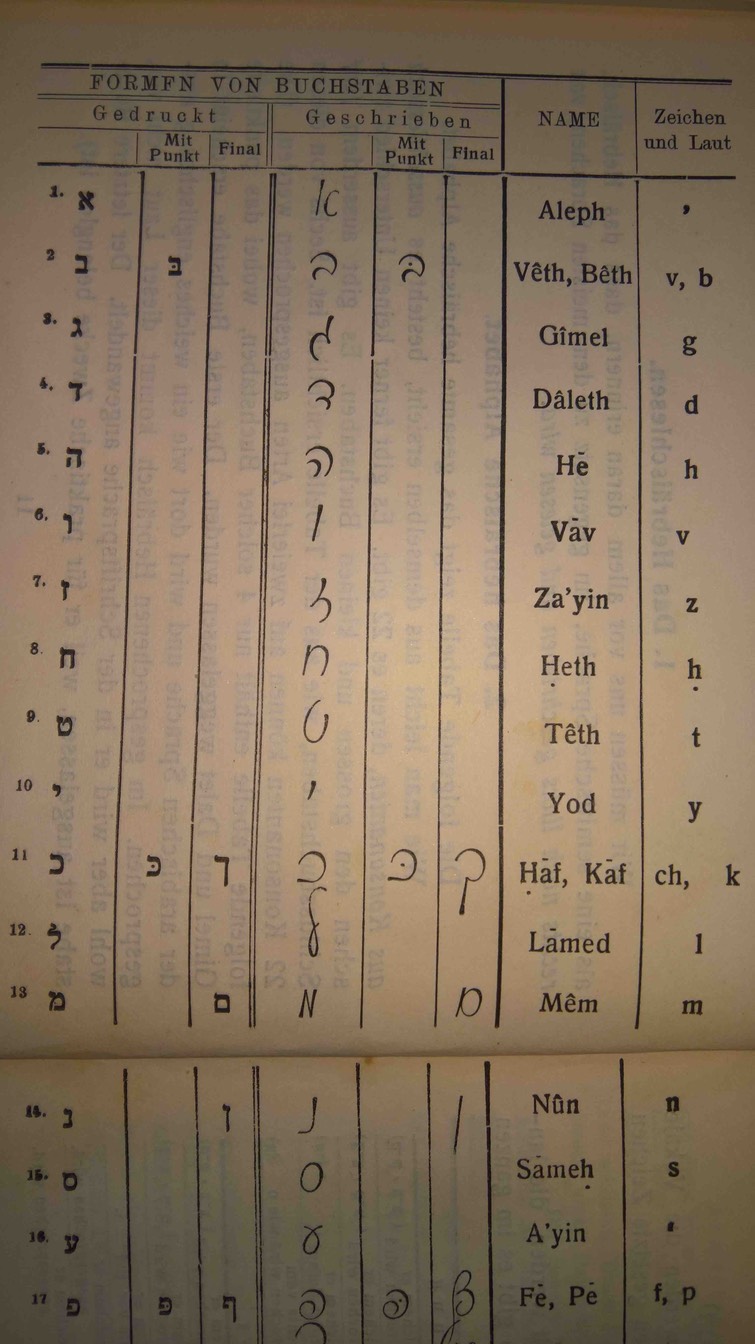

Ashkanazi (German) and Sephardi (Spanish and Israeli) dialects are mentioned and explained:
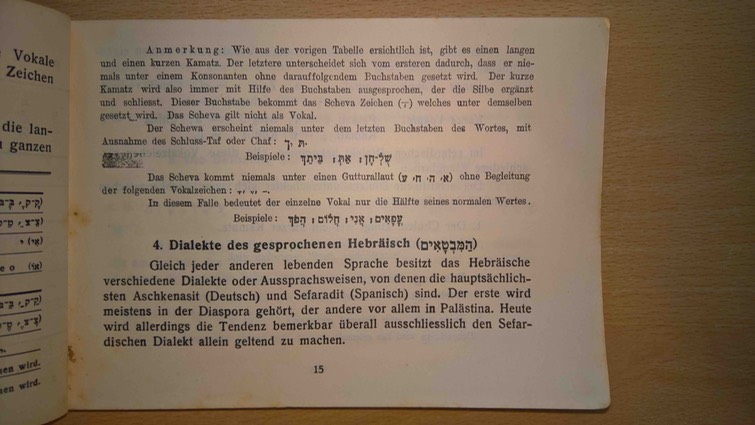
As for the content, I have here a few representative pages.
Getting things cheaper, bargaining:

How are you?
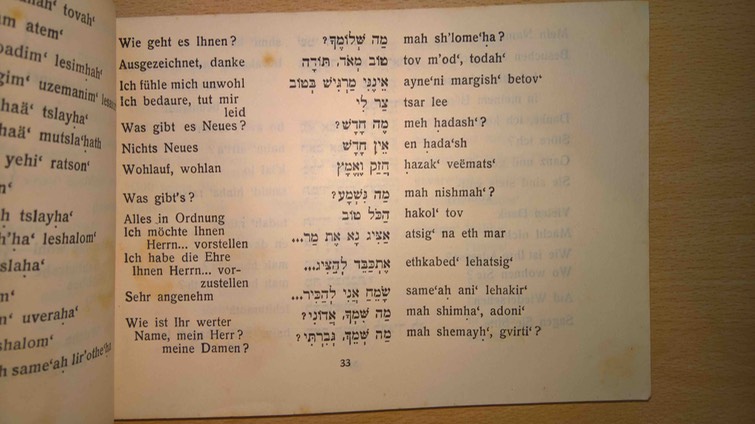
How to travel:
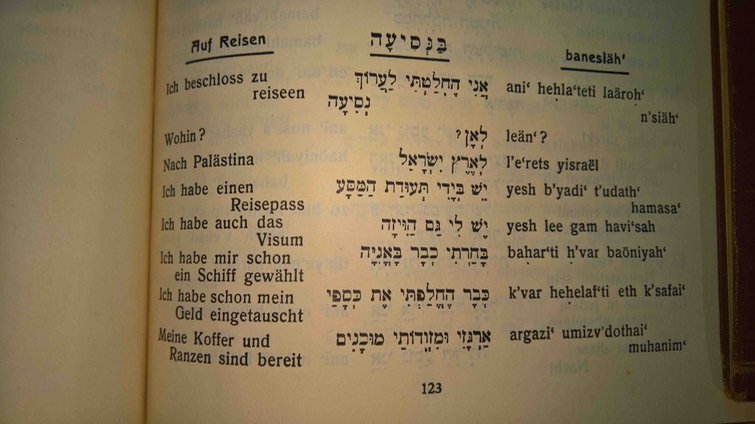
Israeli Food
One of the typical problems in another country is the names of the food.
The Sandwiches
Personally, I like sandwiches of all kinds, chicken, mashed potatoes, fried eggs and mushrooms. Luckily Israeli cuisine includes an intense focus on sandwiches with chicken, fried eggs and mushrooms as well as mashed potatoes as a side.
The Hebrew word for "sandwich" is כָריך "karikh" ("kh" is pronounced like German "ch"), from the verb לכרוך "likhrokh", "to cover".
What is covered includes "chicken", in Hebrew "3of" עוף (the 3 is a voiced pharyngeal fricative, imagine something similar to a voiced <h>). That word derives from the verb לעוף "la3uf", "to fly" (without a device). It really means bird but is generally used for chicken. The actual word for chicken (male) is תרנגול "tarnegol" and for chicken (female) תרנגולה "tarnegola".
Typical items to add to the chicken sandwich include בצל קלוי "batsal qalui" (the "ts" is an emphatic <s>), "onion roasted", מלָפְפון "melafefon", "cucumber", פטריות "pitrioth", "mushrooms", singular פטרייה "pitriya", "mushroom", גבינה "gvina", "cheese" (this non-kosher combination exists in Israeli cuisine but not in traditional Jewish cuisine).
Another typical topping for a sandwich is ביצת עין "bitsath 3ayin", "egg of an eye", "fried egg". It can be called ביצה מטוגנת "bitsa metugeneth", "egg fried", as well. Note that ביצת "bitsath" is "egg of" followed by a genitive while בצה "bitsa" is just "egg" followed by an adjective. לטגן "letagen" means "to fry". Also possible is a חביתה "chabitha", "omelette".
Of course Israeli cuisine often ignores the difference between foods based on meat "basar" בשׂר and milk חלב "chalav". A kosher restaurant would not be able to offer both in the same room or made in the same kitchen.
Kosher Kitchen
Kosher-related terms include
כשר "kasher" = "fit", in Yiddish כשר "kosher" = "kosher" (apparently Soviet Union Yiddish used the spelling קאָשער)
בשרי "basari" = "meaty" or "meat-based", in Yiddish פֿליישיק "fleishik" (this word was apparently deemed kosher by Soviet Union authorities as it included no Hebraisms)
חלבי "chalavi" = "milky" or "milk-based", in Yiddish מילכיק “milkhik".
פרווה "parewe" = "neutral" (not meat-based and not milk-based, includes fish and, originally, birds), in Yiddish פארעווע "parewe" (this word is actually of Yiddish and perhaps ultimately Slavish and not Hebrew origin)
טרף "taraf" = "prey" (meaning meats that come from aninmals that either are animals of prey or have become prey to one), in Yiddish טרייף "treif" (treif things cannot be eaten legally in any combination)
One food that is very typical for the entire levant from Egypt to Syria (and apparently was invented by Christians for lent-based meat fasts) is food based on chickpeas. These include חומוס "hummus" and פלאפל "falaafel" (the א Alef used to mark the long vowel is a sign that this word is of Arabic origin). Hummus is typically eaten with טחינה "tachina", a kind of sesame sauce.
For those who want to eat meat, a typical food in the entire region is the kebap (in Turkish, pieces of meat), called שווארמה "shawaarma" in Arabic and Hebrew (again the א Alef marking a long vowel).
And then there is garlic: שום "shum" in Hebrew, תום "tum" in Aramaic, and ת׳ום "thum" in Arabic. Add it to anything, all the time.
My personal favourite is מרק עדשים "maraq 3adashim", "soup of lentils". (Apparently the Arabic term is שורבת אלעדס "shurbet al3adas", "soup of the lentil", with "shurbet" meaning "soup" and deriving from the word "to drink" שרב.)
Never mix meat and milk in the same food or kitchen.
Potatoes and Related Evils
Other typical toppings for sandwiches are חסה “chasa” = “lettuce", עבגנייה with an Ayin “3avganiya” = “tomato", and sweet potato בטטה "batata", coming to Israel via Arabic traders who travelled without the letter "p".
As for the potato per se, it derives its name, like many things do, from the word for apple תפוח "tapuach" (not the one from Genesis, that was a פרי "peri" which is the source of the word "pear" and very likely was one such, as pears are the apple relative native to the region). A potato is a תפוח אדמה "tapuach adama", "apple of earth" or "apple of ground", and an orange is a תפוז "tapuz", originally a תפוח זהב "tapuach zahav", "apple of gold". Eat them with the linguistic ramifications in mind.
There is an entire garden of linguistic riddles involved with all the words for fruit and earth. פרי appears related to all sorts of growing things, like פרה "para", "cow", while אדמה, "earth" or "ground" is related to אדם "adam", "man", and דם "dam", "blood", as well as אדום "adom", "red". Think about what this means regarding "be fruitful" פרו "peru" and other parts of the story.
It just adds to the general confusion that the word for "mashed potatoes" is פירה "pire" from French "purée" via German and Yiddish. The word is of course unrelated to fruit and cows.
If you are sick of drinking milk, you can have מיץ "mits", "juice", יין "yayin", "wine", or מים "mayim", "waters" (which is plural).
For those who prefer restaurants over streed food, let it be known that "restaurant" is מסעדה "mis3ada", from לסעוד "lis3od", "to dine". "Food" as such is אוכל "okhel", from לאכול "le'akhol", "to eat". And לשתות "lishtoth" is "to drink".
To order (and to invite) is להזמין "lehazmin" and you can pay using כסף "kesef", "silver" or "money", or כרטיס אשראי "kartis ashrai", "credit card".
The Grains and Meats
Jewish bean counters have an entire book on what to do and not to do with which types of grains. And they actually did include beans in those regulations.
The word for bread is לחם "lechem" and the typical grains are חיטה "chita", "wheat", דורה "dora", "millet", שיפון "shippon", "rye", אורז "orez", "rice", and תירס "tiras", "maize". אפונה "afuna" is a bean or a pea.
Certain grains must not be eaten in a leavened state during Passover. Find all relevant regulations and traditions on the Chabad Web site Passover section.
Israel is located in the world's wheat zone. All other grains are traditionally imported but some, like rye and millet, have been known for millenia. The word for rice came with the rice.
Apart from עוף, the bird, typical animals to be eaten include בקר "baqar", "beef", טלה "tala", "lamb", and the Turkey bird הודו "hodu", which is “India”. It is named, like in England, after a far away land. Note that Turkey is not far away from Israel but India is. Also note that the damn bird actually comes from America.
Note that rye is very prominent in European Jewish cuisine but not in Israel. I don't know if rye actually grows in Israel very much. Generally Israeli cuisine is not close to Ashkenazi (German-Jewish, European-Jewish) traditions. The שניצל "shnitzl" made it over as did some other "delicacies" but most Israelis don't eat them (and no sane tourist would want to).
Israel, as a country culturally bordering Germany, is capable of producing some great chocolate as well. But that is a tradition that came to Israel from France and Austria and it's not native.
Do'ar HaYom (1933)
One of my hobbies is collecting old newspapers. I have here an issue of Do'ar HaYom ("Post of the Day") from Jerusalem from 1933.
This is the newspaper ran by Itamar Ben-Avi (born Ben-Zion Ben-Yehuda), the son of Eliezer Ben-Yehuda, the linguist who reintroduced the Hebrew language and invented the modern words, including the word עיתונאי (using "3" for an Ayin: 3itonai), "journalist" (based on עיתון, newspaper (3iton), based on עת, time (3et)).
This issue here is from July 2nd, 1933.
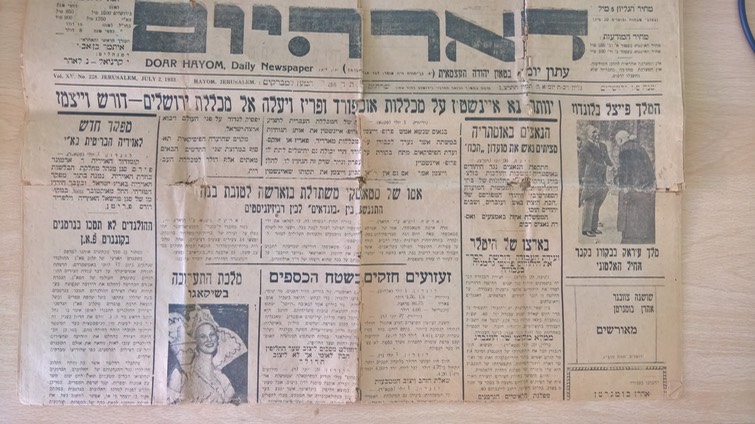
Notable bits include that picture of a woman.
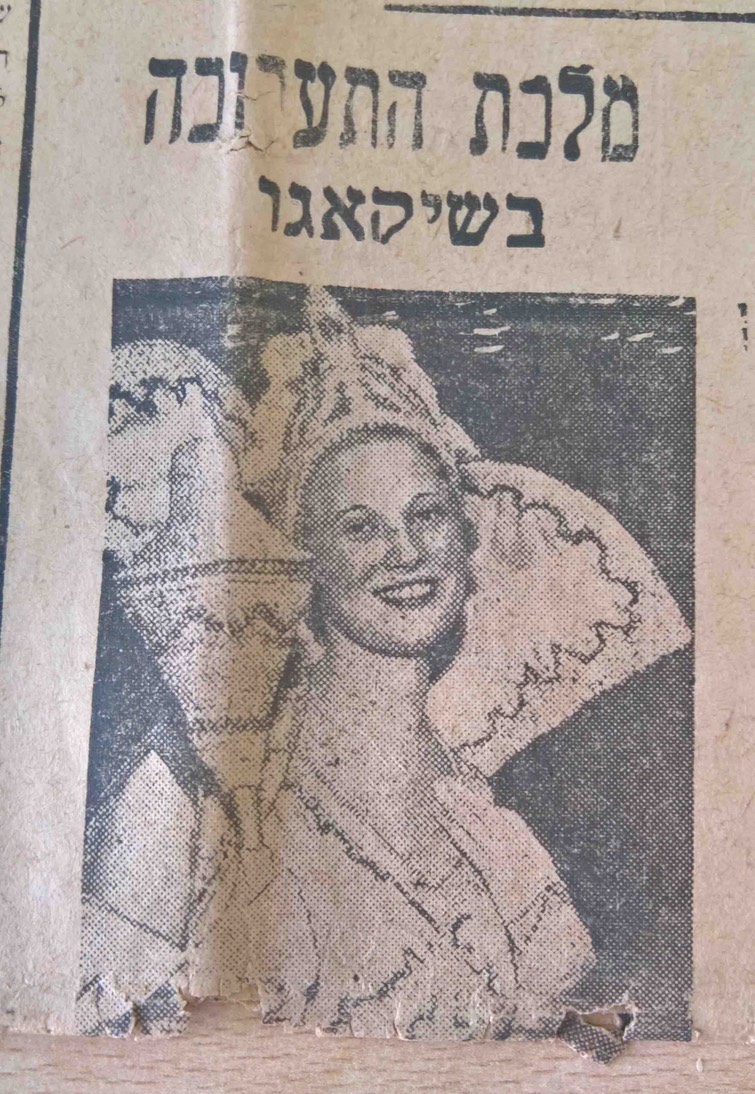
She was, apparently, the "exhibition queen" of Chicago. I think the Chicago exhibition referred to was the "Century of Progress" but I don't know who she was.
Then there is a column about Nazis in Austria attacking Jews. Note that this is several years before Austria's annexation into Germany and only a few months after the Nazis' election victory in Germany.
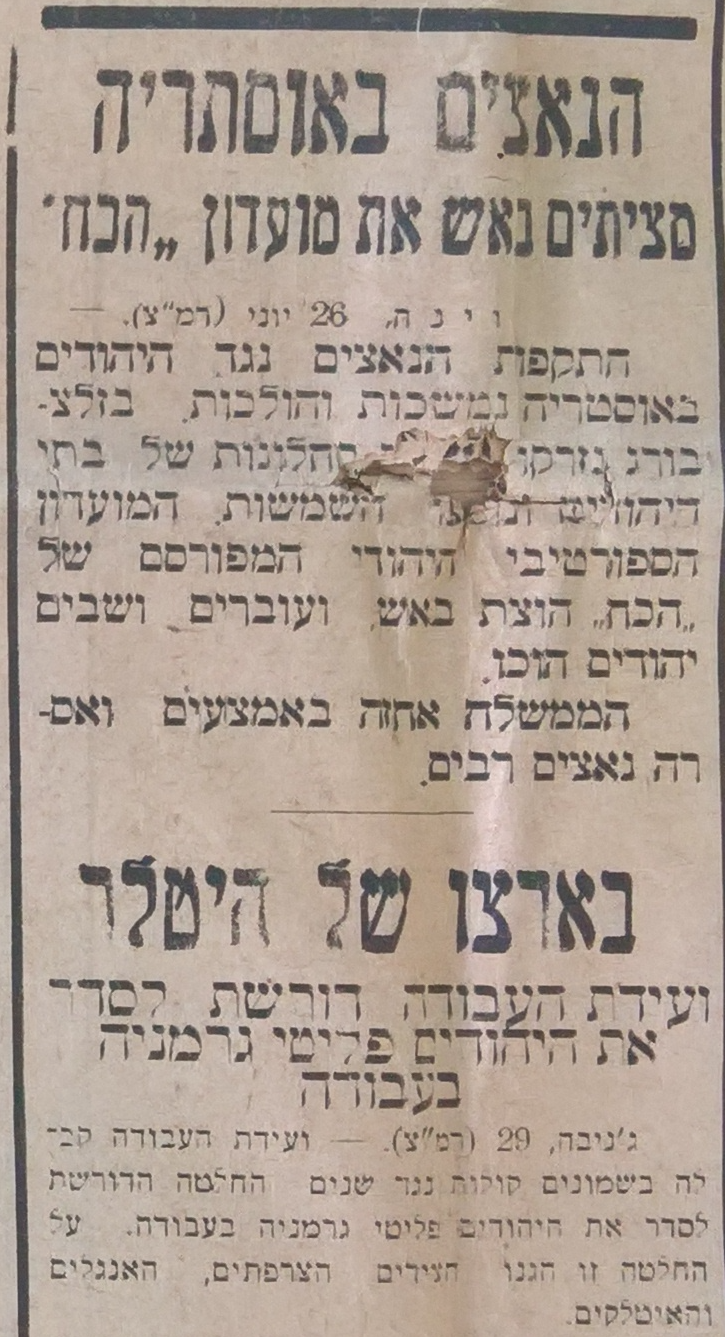
The lower part titled "In the land of Himmler" speaks of Jewish refugees from Germany and a Labour Conference demanding that they be allowed to work. I think this is the event described here on the Jewish Telegraphic Agency Web site.
And finally there is mention of Faisal, the king of Iraq, visiting the tomb of the unknown soldier in London.

King Faisal of first Syria and later Iraq was an ally of the British during World War I. The tomb of the unknown soldier is a World War I memorial.
דער אָנפֿאַנגער
In a second hand bookstore in Tel Aviv I found a Yiddish-language book from 1923, apparently written for Yiddish-language Hebrew teachers. It contains stories that explain Hebrew words and concepts in Yiddish. It's the third part of a series. Unfortunately I couldn't find the first two parts.
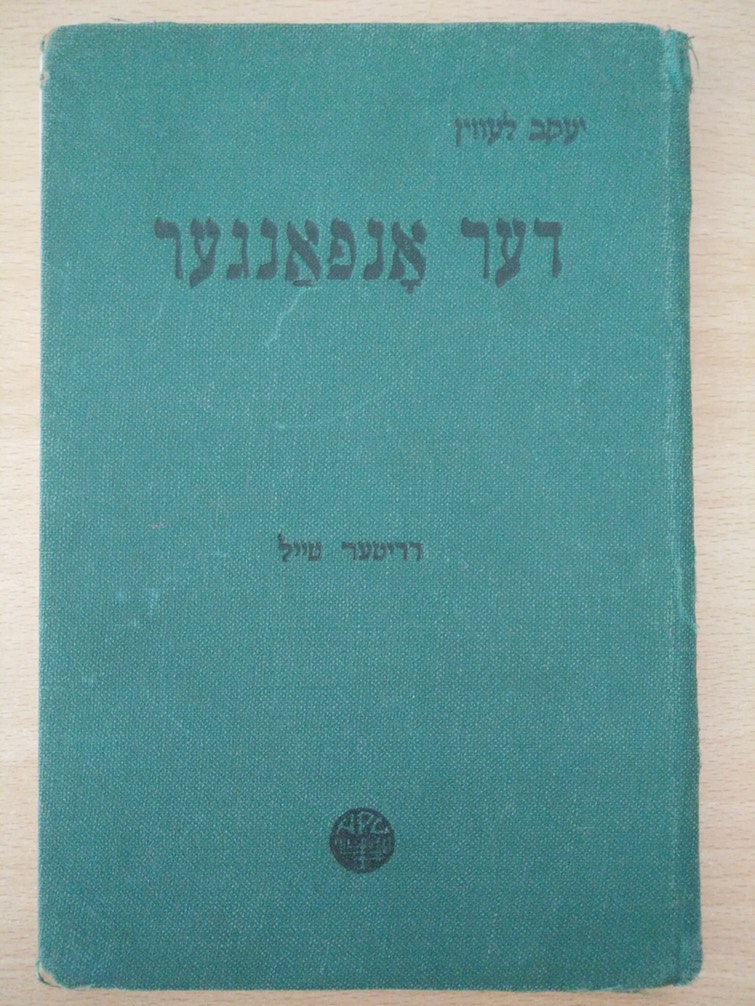
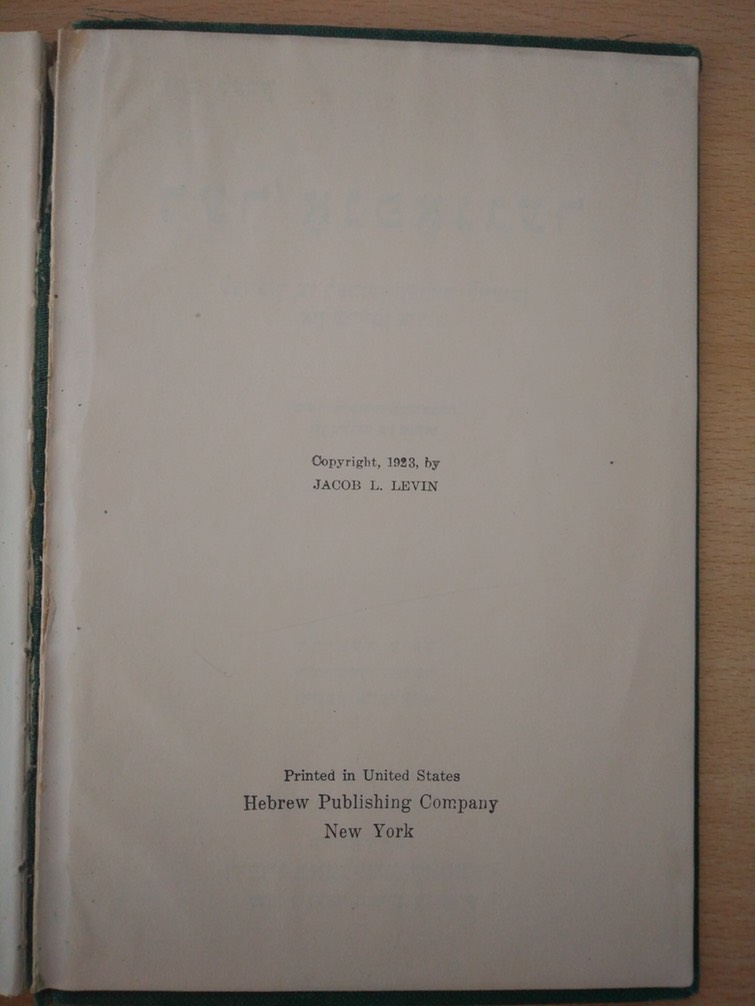
However the book found its way to Eretz Israel, I don't know.
One story:
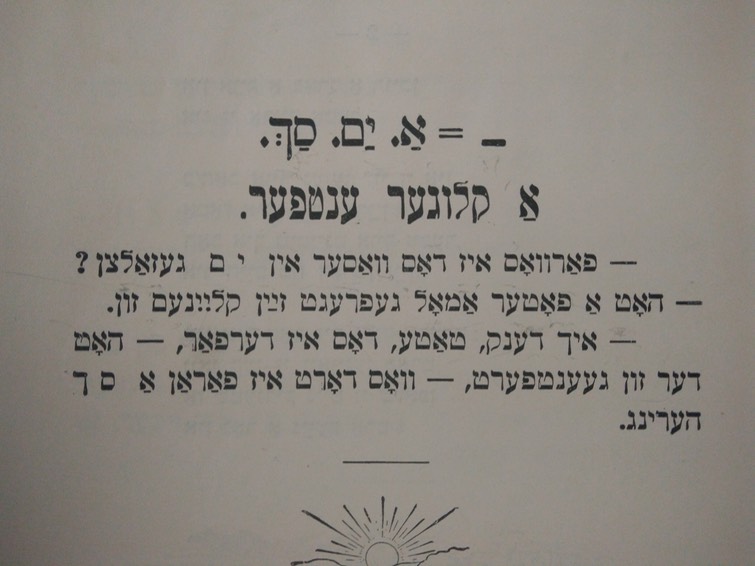
A great ocean
A clever answer
Why is the water in the ocean salty? A father has asked his little son one time.
I think, daddy, that is so because, the son has answered, there is a large number of herring there.
(The Hebrew word for herring translates to "salty fish".)
I really want coins and rings to be related to fingers
The Hebrew word for "colour" is צבע ("śaba3") and the Hebrew word for "finger" is אצבע ("eśba3").*
Following the Semitic cognates table we can see that Hebrew צ (emphatic s) can correspond to Aramaic ט (emphatic t) and Arabic ظ (emphatic z) or to Aramaic צ and Arabic ص (emphatic s). The first צ derives from a proto-Semitic emphatic voiceless interdental fricative (that doesnt exist any more in the three daughters peeped at here), the second from, you guessed it, an emphatic s.
The Hebrew words for "coin" and "ring" are, respectively, מטבע ("ma6be3a") טבעת (pronounced "6abba3at" with a doubled Bet).
Both words seem to derive from a root טבע (emphatic t, b, Ayin) and I really want them to be loan word from Aramaic טבע which hopefully means "finger" but it might not.
Assuming the first derivation of the roots, the Aramaic and Arabic cognates for צבע and אצבע are quickly determined. The Comprehensive Aramaic Lexicon gives for Aramaic טבע the following meanings
- to seal, to sink
- seal, coin
And for Arabic ظبع (emphatic z, b, Ayin), Google gives me nothing.
Assuming the second derivation, the Aramaic cognates are
- to moisten, to dye
- to cast lots
- colour
- finger
And for Arabic صبع (emphatic s, b, Ayin) Google gives:
- اصبع ("eśba3"): finger
Wunderful. I am not getting anywhere. It didn't work. While the words for "finger" and "colour" appear to derive from the same root which has survived in all three languages, the words for "coin" and "ring" don't seem to be related. The obvious solution is to look at what the root טבע (of coin and ring) actually means, in Hebrew.
- nature
- to drown, to sink (causative)
- to mint, to coin
I have a sinking sensation that coins and rings are simply the products of melting metals and sinking them into a bath. (That means that I drowned with my theory.)
I don't think the translation "nature" has anything to do with this (although it also exists in Arabic as طبيعة (pronounced something like "6abu3a").
So that's it. I cannot connect rings and coins to fingers and colours. But I will always remember the four words as if they belonged together.
*I use ś for an emphatic s and 3 for an Ayin.
**I also use 6 for an emphatic t.
I uploaded an archive of the original Not A Linguist Blog here.
